Winter brings unique challenges for bird enthusiasts who want to keep their feathered friends well-fed and protected during harsh weather. As temperatures drop and natural food sources become scarce, creating an effective winter feeding station becomes not just a hobby but a potential lifeline for local bird populations. This article explores comprehensive strategies for designing, maintaining, and optimizing bird feeders to withstand winter’s fury while providing maximum benefit to birds during their time of greatest need.
Understanding Winter Bird Feeding Importance
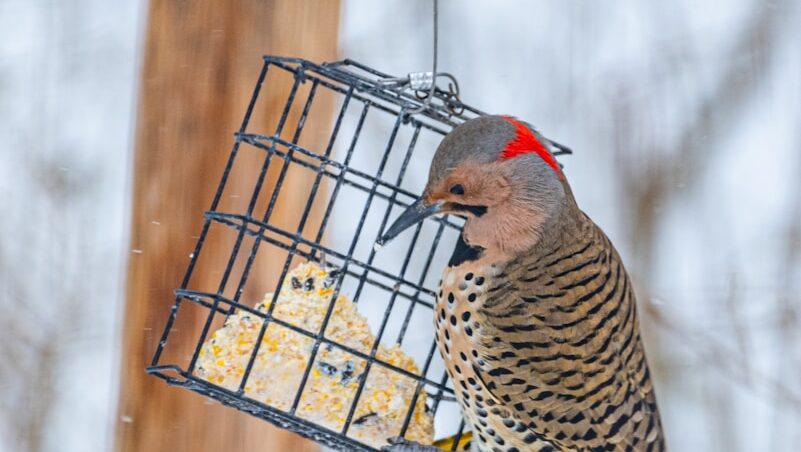
Winter represents a critical period for wild birds when natural food sources become buried under snow or simply aren’t producing. During these challenging months, birds require up to 20% more calories simply to maintain their body temperature and survive cold nights. Your winter feeding station can make the difference between life and death for many species, particularly during severe weather events when birds need to quickly replenish energy reserves. Additionally, winter feeding supports birds during their pre-migration fattening period and helps resident species maintain healthy populations despite harsh conditions. By understanding the heightened importance of supplemental feeding during winter, you can approach your feeder setup with the appropriate level of dedication and care.
Selecting Weather-Resistant Feeder Types
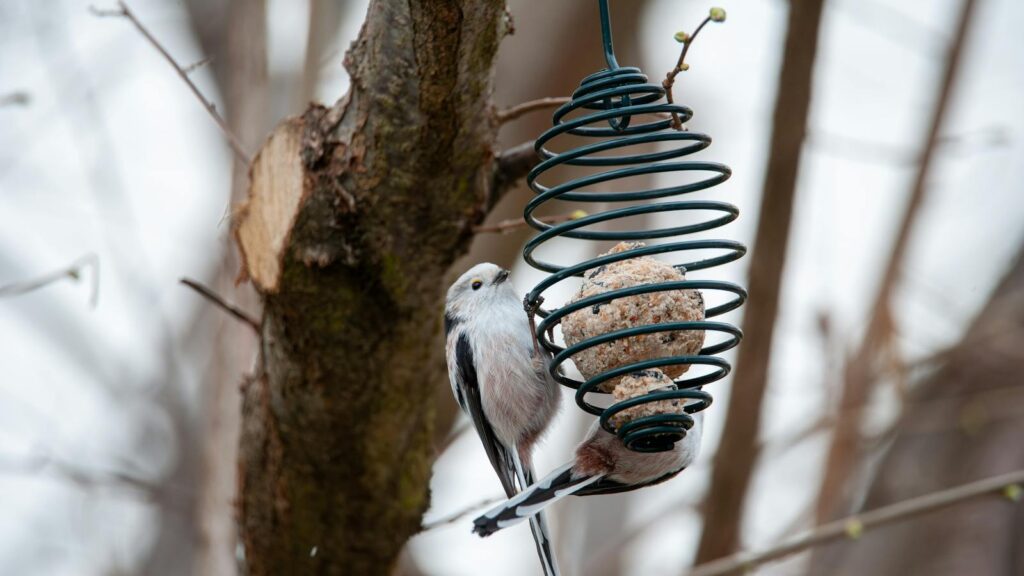
Not all bird feeders are created equal when it comes to withstanding winter conditions. Hopper feeders with metal or recycled plastic construction offer excellent durability against snow, ice, and temperature fluctuations. Tube feeders with metal ports and bases resist damage from freezing and thawing cycles better than cheaper plastic models that can crack in extreme cold. Weight-activated squirrel-proof feeders with metal components tend to function reliably even in sub-freezing temperatures, while feeders with plastic moving parts may become brittle or stick. When selecting winter feeders, look for models with wide roofs that extend well beyond the feeding ports to prevent snow accumulation and keep seed dry. The initial investment in higher-quality, weather-resistant feeders will pay dividends through multiple winter seasons with minimal maintenance.
Strategic Placement for Maximum Protection
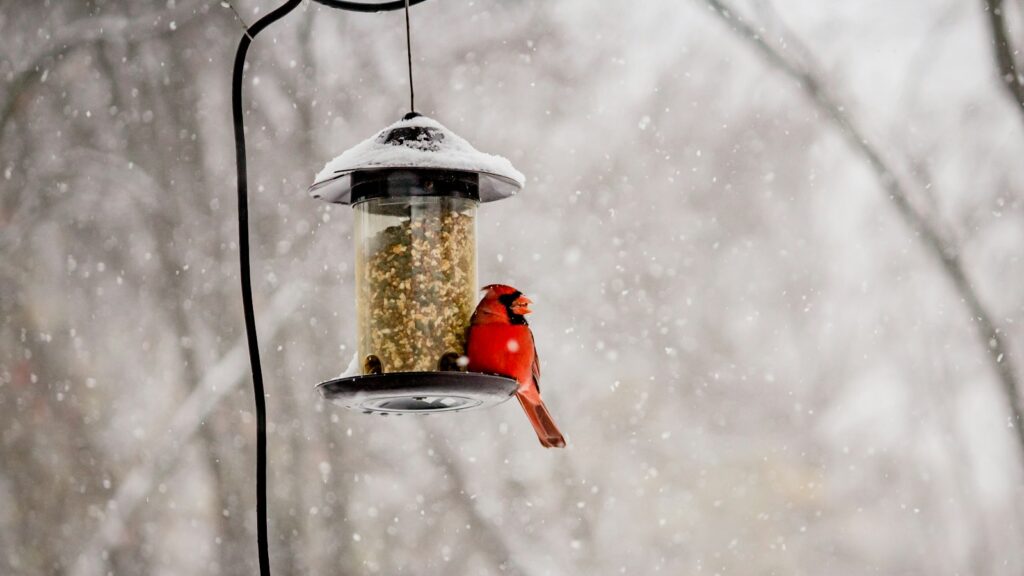
The location of your feeders can dramatically impact their effectiveness during winter weather. Position feeders on the south or east side of your property where they receive maximum sun exposure and protection from prevailing winds. When possible, place feeders within 10-15 feet of dense evergreen shrubs or trees that provide birds with essential shelter from predators and weather while they wait their turn at the feeder. Avoid placing feeders in completely open areas where birds must expend valuable energy flying long distances between protective cover and food sources. Consider creating windbreaks with fencing, brush piles, or temporary barriers if natural protection isn’t available. Remember that optimal feeder placement sometimes requires seasonal adjustment—what works perfectly in fall may need repositioning as winter deepens and conditions intensify.
High-Energy Food Options for Cold Weather
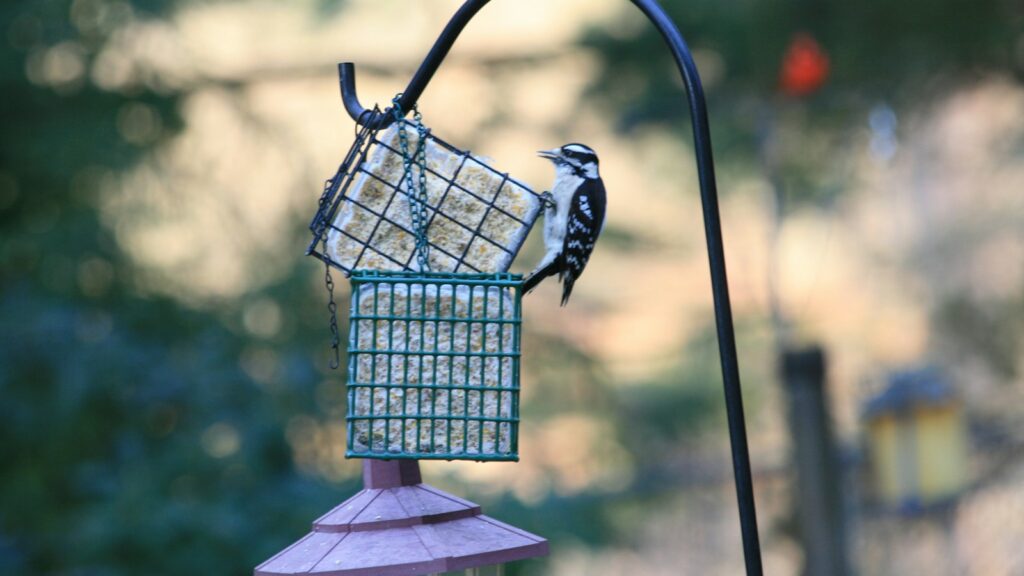
Winter feeding should focus on high-fat, high-calorie options that help birds maintain their energy reserves. Black oil sunflower seeds provide an excellent combination of high fat content (approximately 40%) and universal appeal to many winter bird species. Suet cakes or blocks—made from rendered animal fat mixed with seeds, nuts, or dried fruit—deliver concentrated energy that’s particularly valuable during extreme cold snaps. Peanuts, both shelled and in-shell, offer protein and healthy fats that help birds generate body heat during frigid nights. Consider offering nyjer (thistle) seed for finches and mixed nuts for larger species like jays and woodpeckers. Avoid filling feeders with inexpensive mixes containing fillers like milo, which northern birds typically waste by kicking it onto the ground while searching for more nutritious options.
Preventing Seed Clumping and Freezing
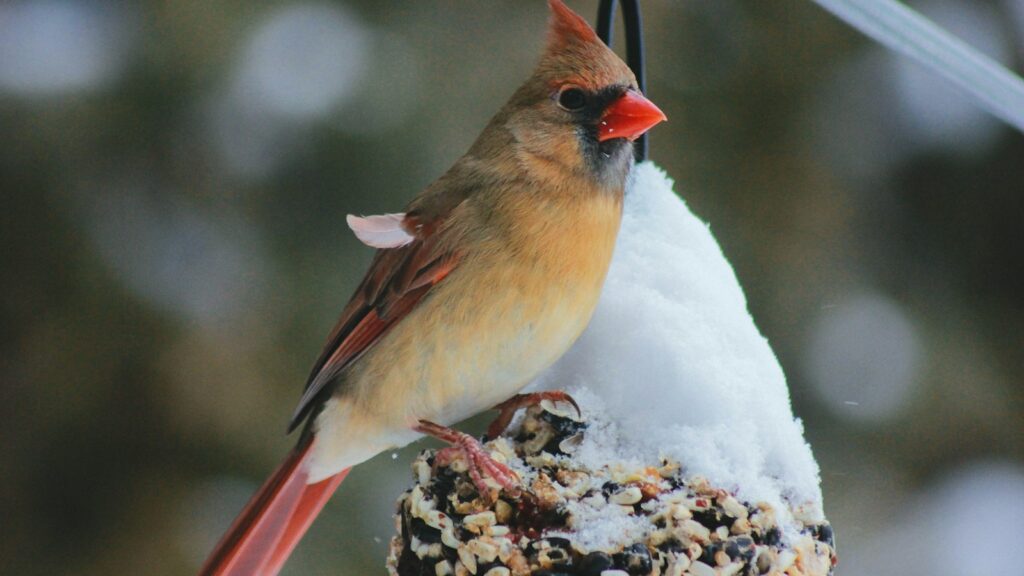
One of winter’s most frustrating challenges is dealing with wet seed that freezes into solid, unusable blocks inside feeders. Combat this problem by investing in feeders with adequate drainage holes at the bottom to allow moisture to escape rather than accumulate. Add silica gel packets (the kind found in shoe boxes) to your seed storage containers to absorb moisture before it reaches your feeders. During ice storms or freezing rain, temporarily bring tube feeders indoors overnight, then refill and rehang them in the morning to prevent ports from freezing shut. Consider mixing a small amount of white millet or cracked corn with black oil sunflower seeds, as these smaller seeds help break up potential clumping and improve flow through feeding ports during freeze-thaw cycles. Regularly inspect feeders after precipitation events and break up any forming ice or clumps before they become problematic.
Utilizing Heated Bird Baths
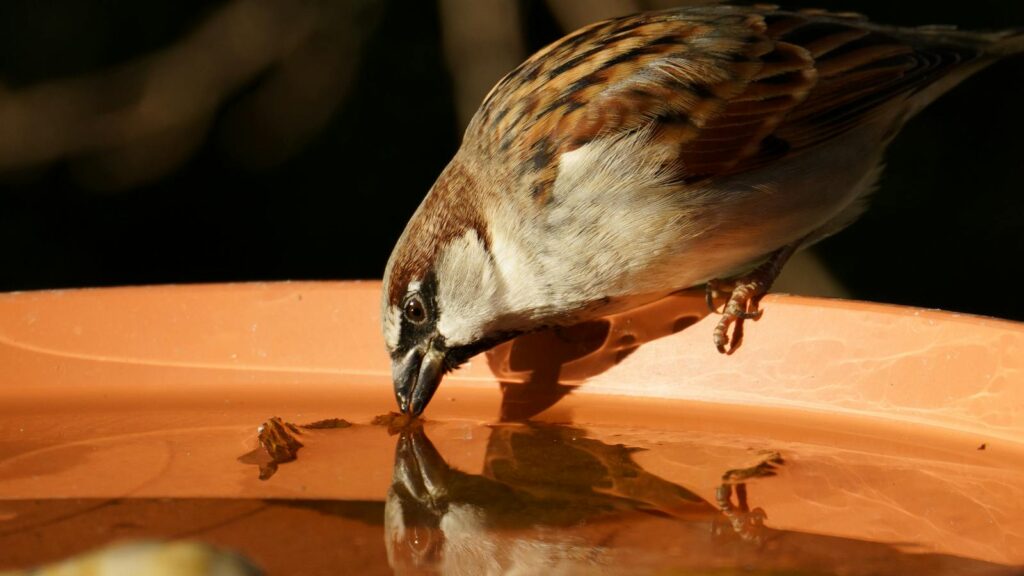
Access to unfrozen water becomes critically important during winter when natural water sources freeze over. Heated bird baths provide birds with essential drinking and bathing opportunities that help them maintain clean, insulating feathers during cold weather. Modern heated baths use surprisingly little electricity and incorporate thermostats that activate only when temperatures approach freezing. Position heated baths at ground level or on stable platforms no more than 2-3 feet high, as birds are reluctant to bathe in elevated locations during cold weather when wet feathers could compromise flight. Clean and refill heated baths every 2-3 days to prevent bacterial buildup and ensure water remains fresh. The combination of reliable food sources and accessible water makes your yard a complete winter survival station for local and migrating birds alike.
Multiple Feeding Stations to Reduce Competition
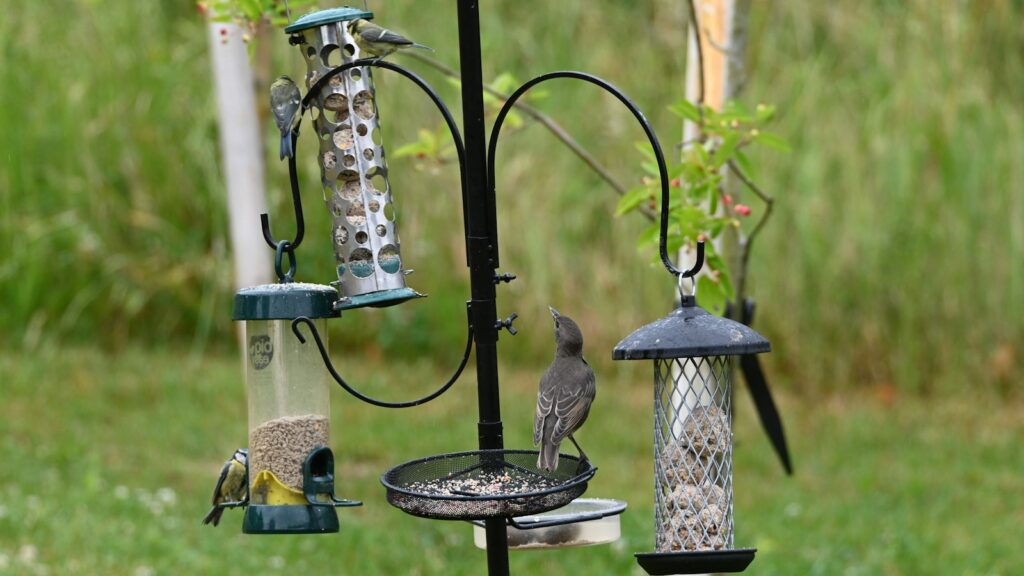
Winter food scarcity often intensifies competition between bird species and individuals at feeders. Creating multiple feeding stations throughout your yard helps reduce aggressive interactions and ensures that submissive species can access food without confrontation. Space feeders at least 10-15 feet apart to prevent dominant birds from monopolizing all food sources simultaneously. Consider establishing dedicated stations for different feeding styles—ground feeding areas with scattered seed for juncos and sparrows, elevated suet for woodpeckers, and traditional hanging feeders for chickadees and cardinals. This approach not only reduces competition but also allows you to observe a wider variety of species as each finds their preferred feeding arrangement. By distributing feeding pressure across multiple locations, you’ll also minimize the concentration of seed hulls and droppings in any single area.
Providing Ground Feeding Options
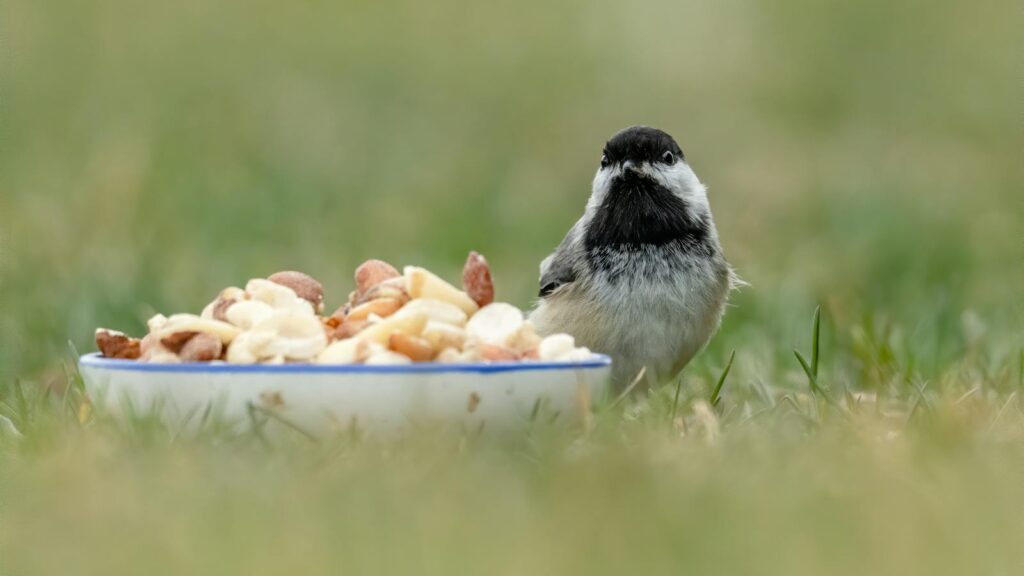
Many winter birds—including juncos, native sparrows, doves, and quail—strongly prefer feeding on the ground rather than at elevated feeders. Create dedicated ground feeding areas using platform feeders raised just a few inches off the ground to keep seed out of snow and moisture. During heavy snow periods, regularly clear patches of ground under dense evergreen trees where snow accumulation is minimal, then scatter seed in these protected areas. Consider using enclosed ground feeding trays with mesh bottoms that allow moisture to drain while keeping seed accessible above snow level. Ground feeding stations should be relocated periodically to prevent the accumulation of waste and potential disease transmission. Remember that ground-feeding birds are particularly vulnerable to predators, so position these feeding areas where birds have clear sightlines and quick access to protective cover.
Wind Protection Strategies
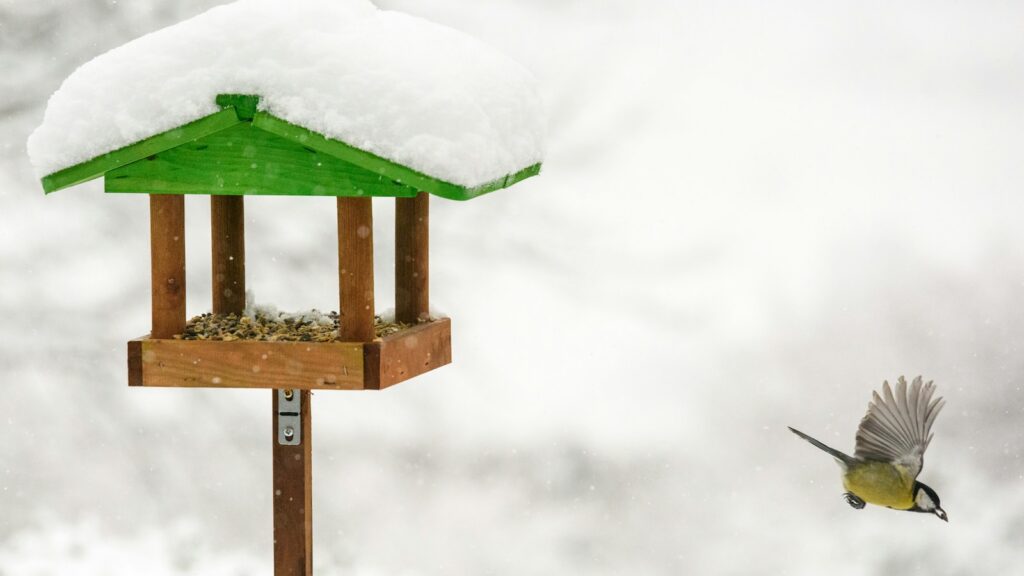
Strong winter winds create multiple challenges for feeding birds, from physically blowing seed out of feeders to increasing the energy birds must expend while feeding. Install wind baffles—circular plastic shields positioned above hanging feeders—to create protected zones where birds can feed without battling gusts. For pole-mounted feeding stations, attach corrugated plastic panels on the windward side to create effective windbreaks that significantly reduce wind exposure. Position feeders on the leeward side of buildings, fences, or dense evergreen hedges that naturally block prevailing winds. During particularly windy periods, temporarily lower hanging feeders to within 2-3 feet of the ground where wind speeds are naturally reduced by friction with the earth’s surface. These wind management techniques not only conserve precious seed but also make feeding more energy-efficient for birds during weather when energy conservation is paramount.
Squirrel and Predator Management
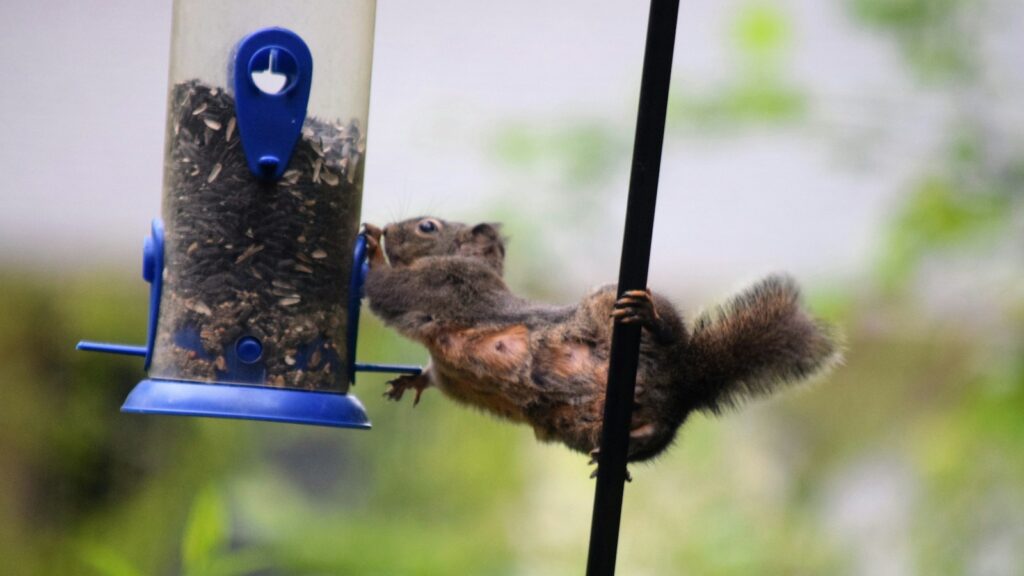
Winter’s food scarcity intensifies pressure from squirrels and other seed competitors who view your well-stocked feeders as prime foraging opportunities. Install quality baffle systems above and below pole-mounted feeders, ensuring baffles are properly sized (at least 18 inches in diameter) and positioned at least 4-5 feet off the ground. Consider establishing a dedicated squirrel feeding station away from bird feeders with corn, peanuts, or squirrel food blocks to reduce their motivation to raid bird feeders. Remain vigilant about hawk predation, which intensifies during winter when hunting becomes more challenging and birds concentrate at feeders. Position feeders with nearby protective cover that allows small birds quick escape routes while not providing ambush points for predators. Temporarily removing feeders for 1-2 days when hawks become persistent can break established hunting patterns while causing minimal hardship for feeder birds.
Establishing Regular Feeding Schedules

Birds quickly develop reliable patterns around dependable food sources, making consistent winter feeding schedules particularly important. Establish a routine of refilling feeders at approximately the same times each day, ideally providing fresh seed early in the morning and topping off supplies in mid-afternoon before birds feed heavily prior to roosting. During severe weather events, check and refill feeders more frequently as consumption rates typically increase dramatically. If you must travel during winter, arrange for a neighbor or friend to maintain your feeding schedule rather than leaving feeders empty for extended periods. Birds that come to depend on your feeding station may face serious energy deficits if they make unnecessary trips to empty feeders during critical weather periods. The reliability of your winter feeding program becomes increasingly important as natural food sources diminish through the season.
Proper Winter Feeder Maintenance
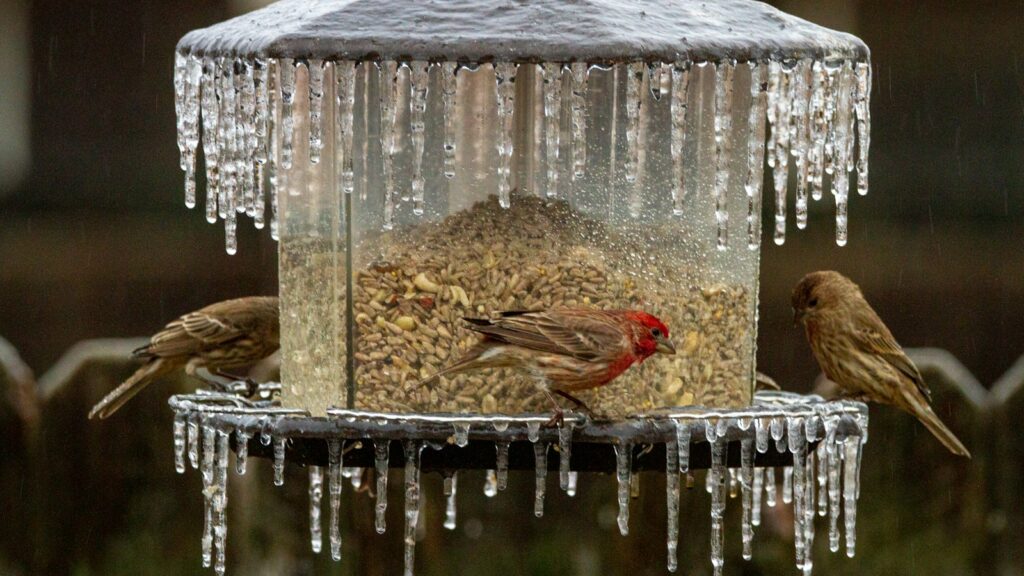
Regular maintenance becomes even more crucial during winter when wet conditions can promote mold growth and disease transmission. Schedule weekly cleaning of all feeders using a solution of one part bleach to nine parts hot water, thoroughly rinsing and drying before refilling. After snow or ice storms, promptly clear accumulated precipitation from feeding ports, perches, and seed trays to maintain accessibility. Regularly rake up fallen seed hulls and droppings beneath feeders to prevent the growth of harmful bacteria and mold that can cause respiratory diseases in ground-feeding birds. Pay special attention to platform feeders, which require more frequent cleaning due to direct exposure to the elements and bird droppings. Consider rotating multiple sets of feeders, allowing thoroughly cleaned units to completely dry indoors while their counterparts remain in service.
Emergency Feeding During Severe Weather
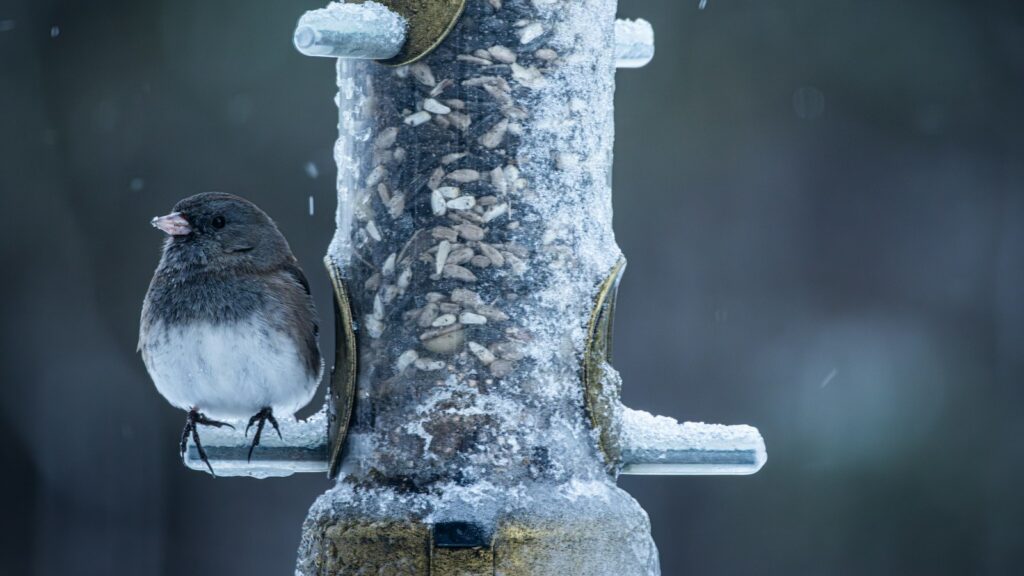
Extreme winter weather events require special feeding considerations to support birds through potentially life-threatening conditions. Prior to major storms, fill all feeders to maximum capacity and consider temporarily deploying additional feeders to create food reserves. During ice storms or blizzards, scatter high-energy seed directly on covered porches, under overhangs, or on cleared patches of ground where birds can access food without negotiating ice-covered perches. Create emergency ground feeding stations using overturned trash can lids or shallow plastic containers that provide raised surfaces above deep snow. After heavy snowfall, promptly shovel paths and clear areas beneath feeders so ground-feeding species can access fallen seed. During multi-day severe weather events, make every effort to check and refill feeders at least once daily, as these periods represent the most critical times when supplemental feeding truly becomes survival support rather than mere supplementation.
Documenting Winter Feeding Success

Maintaining records of your winter feeding program provides valuable insights for improving your approach in future seasons. Keep a simple journal noting which feeder types and food offerings attract the greatest variety and numbers of birds during different weather conditions. Track consumption rates during various weather patterns to better anticipate seed needs before storms. Photograph unusual visitors or peak activity periods to document the impact of your feeding program. Consider participating in citizen science projects like the Great Backyard Bird Count or Project FeederWatch that collect valuable data on winter bird populations while providing structure for your observations. These records not only enhance your personal enjoyment but contribute to larger scientific understanding of how winter feeding influences bird survival and population dynamics.
Conclusion
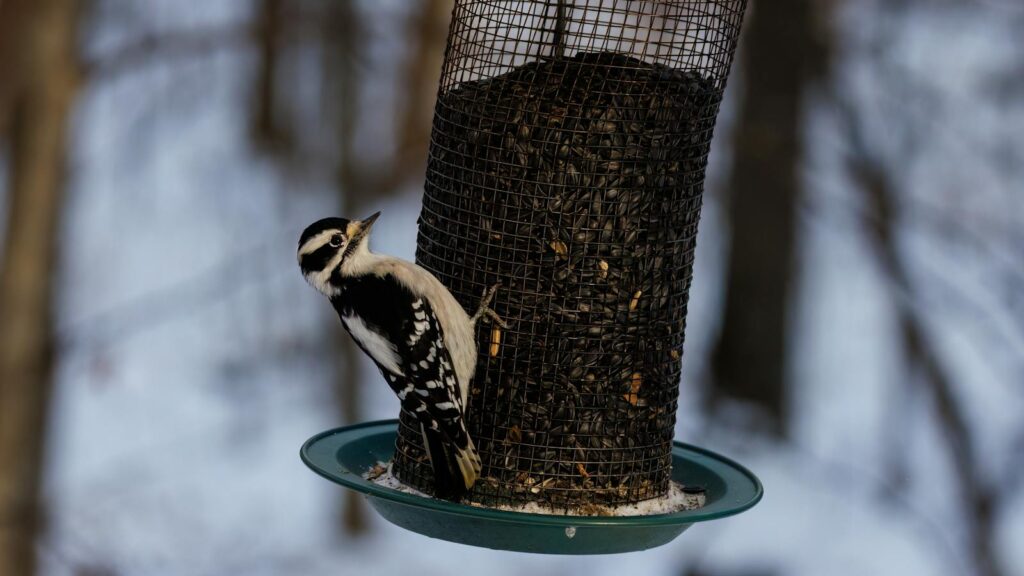
Creating an effective winter bird feeding station requires thoughtful planning, quality equipment, and consistent maintenance. By implementing the strategies outlined above, you’ll not only increase the survival rates of your local bird populations but also create exceptional birdwatching opportunities during a season when other wildlife viewing may be limited. The relationships you build with your winter birds through reliable feeding practices often lead to these same birds returning year after year, sometimes even bringing their offspring to your feeders. As you refine your approach each season, you’ll develop a winter feeding system perfectly tailored to your local climate, bird community, and property characteristics—transforming a simple act of feeding into a sophisticated support system for winter wildlife.
